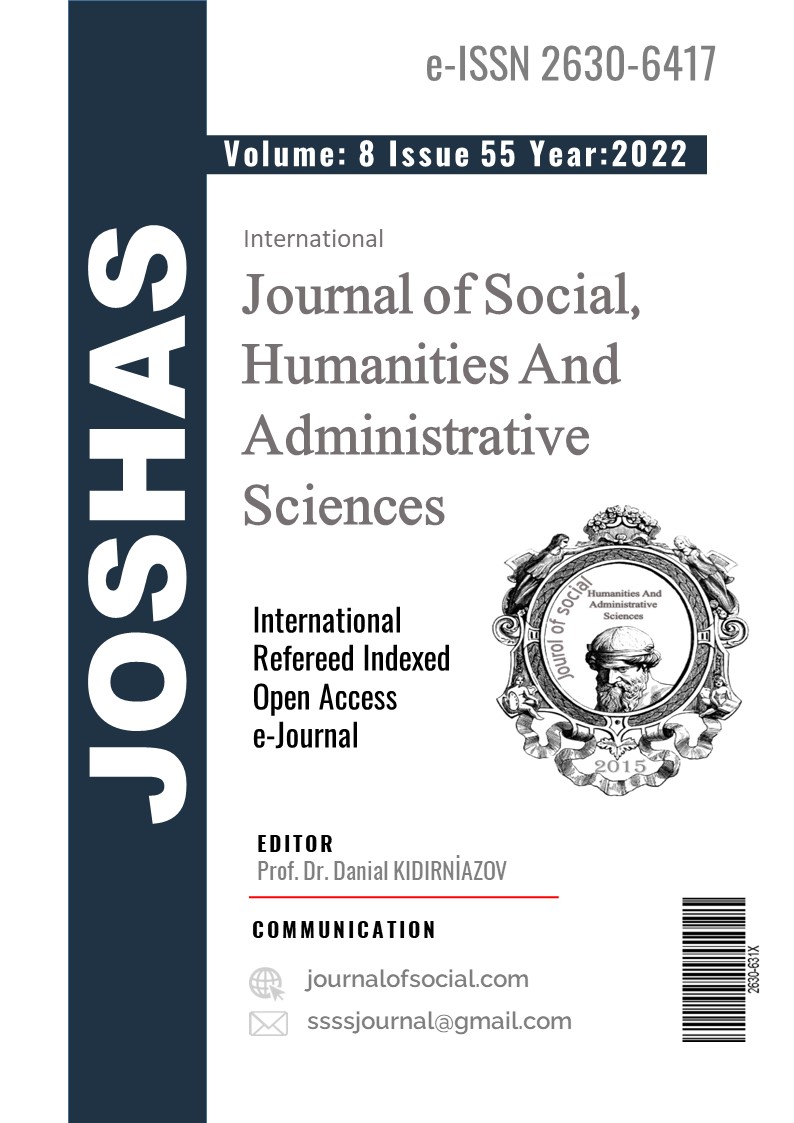Author :
Abstract
Su, insanoğlunun yaşamını sürdürebilmesi için ihtiyaç duyduğu en önemli unsurlardan biridir. Yaşamı sürdürebilme ihtiyacı tarih boyunca, insanoğlunun su kaynakları yakınlarına yerleşmesine neden olmuştur. Türk mimarisinde sokak dokusu içerisindeki en küçük yapılardan biri olan çeşme, sosyal yasamdaki yeri ve fonksiyonuyla mimarlık tarihi içerisindeki önemini sürekli korumuştur. Çeşmeler hayır amaçlı yapıldıkları gibi, aynı zamanda dönemin mimari üsluplarını taşıyan, meydanları süsleyen, sesi ve görüntüsü ile estetik değer taşıyan, halkın su ihtiyacını karşılayan sanat eserleridir. Cumhuriyet dönemiyle birlikte hızlı gelişen kentleşme ve evlere şebeke suyunun gelmesiyle önemini yitirmiştir. İnsanların temel ihtiyaçlarından biri olan su ihtiyacını karşılayan çeşme yapılarının bazıları günümüzde yol yapım çalışmaları ve kentleşmeden dolayı yok olmuş, bazıları da bakımsız ve yok olma tehlikesi altındadır. İç Anadolu Bölgesinde bulunan Kayseri ilinin güneydoğusunda yer alan ilçesi Talas, tarih boyunca birçok medeniyete ev sahipliği yapmıştır. Bu çalışmada Kayseri’nin Talas ilçesinde yer alan altı adet çeşme kronolojik olarak incelenmiştir. Tamamı 19.yüzyıl sonu ve 20.yüzyıl başına tarihlendirilen çeşmeler bağımlı, tek cepheli ve tek kemerli olarak inşa edilmiştir. Günümüze ulaşan çeşmelerden dördü yuvarlak kemerli, ikisi ise kemersizdir. İncelenen çeşmelerin kitabeleri dayanıklı bir malzeme olan beyaz mermer üzerine yazılmıştır. Kitabesi bulunmayan bir çeşme ise kaynaklardan ve benzerlerinden yararlanılarak tarihlendirilmeye çalışılmıştır. Çalışmamızın amacı, Talas çeşmelerini belgelemek ve çeşmelerin hem kendi içindeki gelişimini hem de Türk çeşme mimarisindeki yerini belirlemeye çalışmaktır.
Keywords
Abstract
The water is one of the most important elements that human beings need to survive. The need to sustain life has caused human beings to settle near water resources throughout history. The fountain, which is one of the smallest structures in the street texture in Turkish architecture, has always preserved its importance in the history of architecture with its place and function in social life. Fountains are not only made for charitable purposes, but also are works of art that carry the architectural styles of the period, adorn the squares, have aesthetic value with their sound and appearance, and meet the water needs of the people. It has lost its importance with the rapid development of urbanization and the arrival of mains water to the houses with the Republican period. Some of the fountain structures that meet the water need, which is one of the basic needs of people, have disappeared due to road construction works and urbanization, and some of them are neglected and in danger of extinction. Talas, a town in the southeast of Kayseri province in the Central Anatolia Region, has hosted many civilizations throughout history. In this study, six fountains in the Talas district of Kayseri were examined chronologically. The fountains, all of which are dated to the end of the 19th century and the beginning of the 20th century, were built as dependent, single-sided and single-arched. Of the fountains that have survived to the present day, four have round arches and two are without arches. The inscriptions of the examined fountains were written on a durable material, white marble. A fountain that does not have an inscription has been tried to be dated by using sources and the like. The aim of our study is to document the Talas fountains and to try to determine both the development of the fountains and their place in Turkish fountain architecture.
Keywords
- 1. Arseven, C.E. (1950), “Çeşme”, Sanat Ansiklopedisi, 1:488-491.
- 2. Bayhan, A. & Salman, F.(2009).”Çankırı/Bayramören-Yurtpınar Köyü’ndeki Balıklı Pınar”, Atatürk Üniversitesi Güzel Sanatlar Enstitüsü Dergisi, 23: 27-38.
- 3. Denktaş, M.(2000). Kayseri’deki Tarihi Su Yapıları, Kayseri: Kıvılcım Yayınevi, 118-119.
- 4. Eyice, S.(1993).”Çeşme”, T.D.V. İslam Ansiklopedisi, 8: 277-278,İstanbul.
- 5. İnternet, (https://twitter.com/slmhktn/status/947401243013599233/photo/1), Erişim:03/06/2022.
- 6. İnternet, (https://kayseri.ktb.gov.tr/TR-54998/talas.html) , Erişim:15/06/2022.
- 7. İnternet. (https://www.talas.bel.tr/images/ustmenu/20220310092503_0.jpg),Erişim:15/06/2022.
- 8. İnternet,(https://3.bp.blogspot.com/GNXn9Tkfoo/XF9MQ2uNyHI/AAAAAAAAv30/OnIFQulBfiYIzbfcIIUZUmfZ AKRLx-3TACLcBGAs/s1600/talas_kayseri.jpg) , Erişim:15/06/2022.
- 9. Karasu, G.(2006).”Afyon Çeşmeleri”, Yayımlanmamış Yüksek Lisans Tezi, Gazi Üniversitesi Sosyal Bilimler Enstitüsü, Ankara.
- 10. Karpuz, H.- Dülgerler, O. N.(2006), Konya Çeşmeleri Üzerine Bir Tipoloji Denemesi, Sanatta Anadolu Asya ilişkileri Prof. Dr. Beyhan Karamağaralı'ya Armağan, Ankara,317-319.
- 11. Ödekan, A.(1992), Kent İçi Çeşme Tasarımında Tipolojik Çözümleme, Semavi Eyice’ye Armağan, İstanbul Yazıları, İstanbul,281-297.
- 12. Ödekan, A.(1993),” Çeşme”, Türkiye Diyanet Vakfı İslam Ansiklopedisi, 2: 488-491.
- 13. Önge, Y.(1997), Türk Mimarisinde Selçuklu ve Osmanlı Döneminde Su Yapıları, Ankara: Türk Tarih Kurumu Yayınları, 1-39.
- 14. Özbek, Y.-Aslan, C.(2008), Kayseri Taşınmaz Kültür Varlıkları Envanteri, C.III, Kayseri.
- 15. Özsoy, H.(1996), Dünden Bugüne Talas, Talas Belediyesi Kültür Yayınları no.1, Kayseri: Çınar Ajans.
- 16. Talas Belediyesi (2018) ,Talas Faaliyet Raporu, Kayseri,51.
- 17. Tay, L.(2011),”Kırşehir Çeşmeleri”, Adıyaman Üniversitesi Sosyal Bilimler Enstitüsü Dergisi, 4: 204-221.
- 18. Türkmen, K.(1997), “Talas’ta Türk Devri Yapıları”, Vakıflar Dergisi, Ankara: Vakıflar Genel Müdürlüğü Yayınları, 26:154-192.
- 19. Yılmaz, N.(2005),”Kent Merkezlerindeki Kentsel Sit Alanlarında Değişim Sürecinin Değerlendirilmesi”, Yayımlanmamış Yüksek Lisans Tezi, İstanbul Teknik Üniversitesi, İstanbul.20.
- 20. Yörükoğlu, Ö.(1987), Kayseri Çeşmeleri, Kayseri: Beğendik Kültür Hizmetleri Serisi, 81-94.





